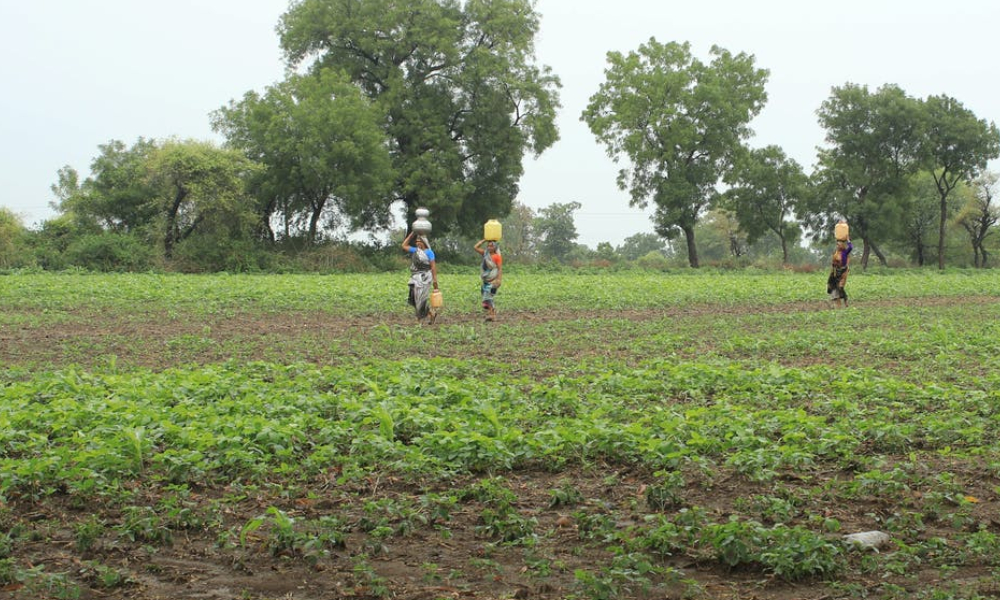
Image Credits: pexels.com
Nagaland: As Climate Change Delays Monsoon, Drought-Like Situation Predicted In State
Writer: Anuran Sadhu
A post grad journalism student of SIMC, Pune with a passion for using words to get my message across in the most unique ways possible and curiosity is the force that drives me to learn and experience more every day.
Nagaland, 18 Jun 2021 1:41 PM GMT
Editor : Ankita Singh |
A literature lover who likes delving deeper into a wide range of societal issues and expresses her opinions about the same. Keeps looking for best-read recommendations while enjoying her coffee and tea.
Creatives : Anuran Sadhu
A post grad journalism student of SIMC, Pune with a passion for using words to get my message across in the most unique ways possible and curiosity is the force that drives me to learn and experience more every day.
Nagaland may face a reduction of 70% in rice production for 2020-21 and approximately 915 villages could be affected.
Rice production in Nagaland, which was supposed to be 551,000 metric tonnes for 2020-21, is now estimated to have reduced by 70% to just 166,000 metric tonnes, according to the Agriculture Production Commissioner of Nagaland.
The delayed monsoon in Nagaland has brought a drought-like situation to the state. This has affected close to 70% of the population in rural areas where they depend on agricultural activities for their livelihood, said the state government.
Drought-Like Situation
Agriculture Minister of Nagaland, G Kaito Aye, said that it was a strange year for the farmers. He also warned that if the delayed monsoon, brought by climate change, persists, then there a possibility of a drought. According to official data, approximately 68,662 hectares of jhum fields and 525 hectares of horticultural crops have been affected. Around 915 villages have been affected by the lack of rainfall.
"Terraced rice cultivation (upland) and wet terraced rice cultivation have also been affected due to deficient monsoon rains in all the districts causing a delay in land preparation and sowing," agriculture production commissioner Y Kikheto Sema said, as reported per The Hindustan Times. He also alerted that if the situation does not improve till July, the farmers may fail to undertake cultivation activities.
He highlighted that if the dry spell continues for too long, the rice production may get reduced from 551,000 metric tonnes to 166,000 metric tonnes – a 70% fall. Besides rice, commercial crops like large cardamom, fruits and vegetables and livestock such as fisheries, piggery have also been affected.
FAW infestation worsened the situation
In March, the situation got worse with fall armyworm (FAW) infestation which ruined 3048.45 hectares of maize crop in 334 villages. Even government intervention could not fully make up for the FAW infestation. Seeds and planting materials were distributed for re-sowing in the affected jhum fields, but it did not help because of the deficient rain.
On June 15, Chief Minister Neiphiu Rio called for a meeting with the agriculture and horticulture departments to assess the situation and decide on the next action. According to the officials, the state would require the Centre's help to reduce the effects of the lack of rainfall.
As part of an attempt to minimize loss and promote climate-resilient agriculture, the government will be distributing seeds such as potato, oilseeds, and vegetables for the early Rabi season from September onwards to compensate for the loss of the farmers. A board headed by the Agriculture Production Commissioner (APC) has been put in charge to monitor the situation.
Also Read: Over 75% Indian Districts 'Hotspots' Of Extreme Weather Events: Study
 All section
All section














